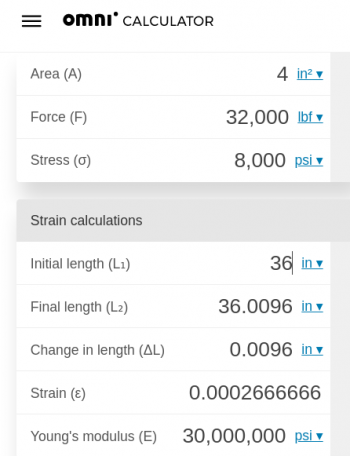Old Flathead fords - I remember those in farm trucks we had. Had to rebuild them several times, but that was so many years ago and I was fairly young then. I don't remember all that much about it other than the old truck was black, had a 5 speed tranny, with two speed rear axle giving an actual 10 speeds. Never used all ten much at all. First gear was called "double low", then low, 2nd, 3rd, and high gear, then move the "dog" to high speed for highway use. Why the electric two speed axle was called "dog" I have no idea. You'll have fun with rebuilding that old Ford. It amazes me how many parts that can still be had for them. We hauled tractor and LOTS of hay bales on that old truck. I think it was a '51 Ford, and the years I remember would have been from about '59 to '65 or so.
I had mean to comment on the angle change like Coal Iron has gave a tad more deflection. Looks like the welds might not be the "weak link' I had originally thought they could be. That 15,000 psi showing on the left side, is that half of the 32,000 psi of the total? If so, that shows the load evenly divided between the two sides. Of course, that is assuming the load is centered. Looking forward to the offcenter load.
Thank you so much for modeling the frame in the program. I think we've both learned a good bit.






